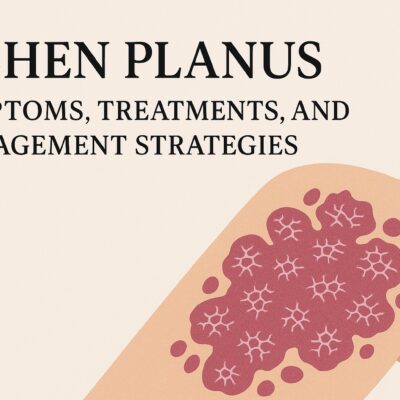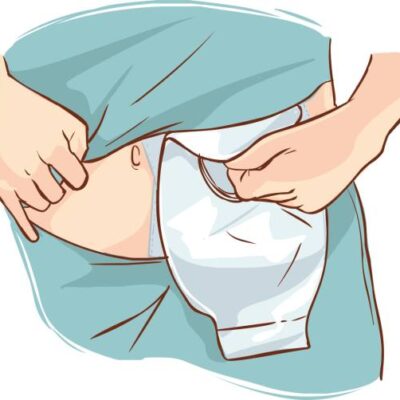Embracing the new Braden Scale II and what hospitals need to know about its changes.
Introduction
Pressure injuries, also known as pressure ulcers or bedsores, are a significant concern in healthcare settings, particularly among individuals with limited mobility or who are bedridden. These injuries can lead to severe complications, including infections and delayed wound healing. To prevent pressure injuries effectively, healthcare professionals use various assessment tools, one of which is the Braden Scale. This article will delve into the details of the Braden Scale, its role in preventing pressure injuries, the introduction of the Braden Scale II, and what hospitals need to know about the changes in the new product.
Understanding Pressure Injuries
Pressure injuries are localized areas of damage to the skin and underlying tissue, often caused by prolonged pressure on specific body parts. These injuries commonly occur in individuals who are confined to bed or have limited mobility, such as patients in hospitals or long-term care facilities. Pressure injuries typically develop in areas where the body’s bony prominences, such as the hips, heels, and tailbone, press against a surface like a bed or a chair.
Introducing the Braden Scale
The Braden Scale is a widely used tool in healthcare settings to assess a patient’s risk of developing pressure injuries. It was developed by Barbara Braden and Nancy Bergstrom in the early 1980s and has since been validated and recognized for its effectiveness. The Braden Scale evaluates six key factors that contribute to the development of pressure injuries, allowing healthcare providers to identify individuals who are at high risk and implement preventive measures promptly.
How Does the Braden Scale Work?
The Braden Scale employs a scoring system that assesses six categories: sensory perception, moisture, activity, mobility, nutrition, and friction and shear. Each category is assigned a score from 1 to 4, with 1 indicating the highest risk and 4 indicating the lowest risk. By evaluating these categories and summing up the scores, healthcare professionals obtain an overall risk score that helps guide preventive interventions.
The Components of the Braden Scale
To gain a better understanding of how the Braden Scale operates, let’s examine its six components:
- Sensory Perception: This category assesses the patient’s ability to respond meaningfully to pressure-related discomfort or pain. Individuals with impaired sensory perception are at higher risk as they may not be able to sense or communicate discomfort, leading to prolonged pressure on vulnerable body areas.
- Moisture: Excessive moisture, such as perspiration or incontinence, can soften the skin and make it more susceptible to damage. This category evaluates the degree of moisture in the patient’s skin and how it affects their risk of developing pressure injuries.
- Activity: The activity category considers the patient’s physical movement and ability to change and control their body position. Those who are immobile or have limited mobility are at greater risk due to the constant pressure on specific areas.
- Mobility: Similar to the activity category, mobility focuses on the patient’s ability to independently change positions. Those who require assistance or are entirely dependent on others are more susceptible to pressure injuries.
- Nutrition: Adequate nutrition is essential for maintaining healthy skin and supporting the body’s natural healing process. Poor nutrition can weaken the skin’s integrity, making it more prone to pressure injuries.
- Friction and Shear: Friction occurs when the skin rubs against another surface, while shear refers to the displacement of tissue layers in opposite directions. Both friction and shear can contribute to the development of pressure injuries, especially when combined with prolonged pressure.
Scoring and Interpretation
After assessing each category, the scores are summed up, resulting in an overall risk score. The lower the total score, the higher the risk of developing pressure injuries. The Braden Scale ranges from 6 to 23, with a lower score indicating a greater risk. Healthcare providers typically use cutoff scores to determine the appropriate preventive interventions for patients at various risk levels.
Limitations of the Original Braden Scale
While the original Braden Scale has been a valuable tool in preventing pressure injuries, it does have some limitations. Over time, advancements in healthcare practices and technologies necessitated the development of an updated version: the Braden Scale II.
The Arrival of the Braden Scale II
In response to the limitations of the original scale, the Braden Scale II was introduced to provide a more comprehensive and accurate assessment of an individual’s risk for pressure injuries. The Braden Scale II builds upon the foundation of its predecessor but incorporates significant improvements to enhance its reliability and effectiveness.
Key Changes in the Braden Scale II
The Braden Scale II incorporates several key changes that address the limitations of the original scale. Some notable changes include:
- Addition of a Subcategory: The Braden Scale II introduces a new subcategory within the activity component called “ability to change and control body position.” This addition provides a more specific evaluation of a patient’s ability to reposition themselves independently.
- Reevaluation of Scoring Criteria: The Braden Scale II reevaluates the scoring criteria for each component, ensuring that they align with current evidence-based practices and reflect a more accurate assessment of pressure injury risk.
- Enhanced Sensory Perception Evaluation: The sensory perception category is expanded in the Braden Scale II to include the assessment of cognitive abilities. This modification recognizes that cognitive impairments can impact a patient’s ability to perceive and respond to pressure-related discomfort.
Benefits of Using the Braden Scale II
The Braden Scale II offers several benefits over its predecessor. By incorporating improvements based on current research and clinical knowledge, the Braden Scale II provides a more reliable assessment of an individual’s risk for pressure injuries. Some of its key benefits include:
- Enhanced Accuracy: The updates in the Braden Scale II improve the accuracy of risk assessment, allowing healthcare providers to identify patients at higher risk and implement preventive measures more effectively.
- Comprehensive Evaluation: With the addition of the new subcategory and expanded criteria, the Braden Scale II provides a more comprehensive evaluation of a patient’s risk factors, ensuring that no crucial aspects are overlooked.
- Better Alignment with Evidence-Based Practice: The Braden Scale II aligns with current evidence-based practices in pressure injury prevention. This alignment enhances its clinical utility and helps healthcare providers make informed decisions regarding preventive interventions.
Implementing the Braden Scale II in Hospitals
Hospitals play a crucial role in preventing pressure injuries among their patients. To successfully implement the Braden Scale II, hospitals need to consider the following:
- Staff Training: Healthcare providers involved in the assessment and management of pressure injuries should receive appropriate training on the utilization of the Braden Scale II. This training ensures consistency and accuracy in risk assessment across different healthcare settings within the hospital.
- Integration into Clinical Workflow: Hospitals should integrate the Braden Scale II seamlessly into their existing clinical workflow. This integration may involve incorporating the scale into electronic health records systems or developing standardized protocols for its use.
- Collaborative Approach: Implementing the Braden Scale II requires a collaborative approach involving healthcare providers from various disciplines, including nurses, physicians, and wound care specialists. Collaboration ensures comprehensive risk assessment and facilitates the implementation of preventive strategies.
Educating Healthcare Providers
To effectively utilize the Braden Scale II, hospitals should prioritize ongoing education and training for their healthcare providers. Educational initiatives can include workshops, seminars, and online resources that cover the proper use of the Braden Scale II, interpretation of scores, and implementation of preventive interventions. By equipping healthcare providers with the necessary knowledge and skills, hospitals can enhance patient care and reduce the incidence of pressure injuries.
FAQs About the Braden Scale and Braden Scale II
- How does the Braden Scale help prevent pressure injuries?
- By assessing various risk factors, the Braden Scale helps healthcare providers identify individuals at higher risk for pressure injuries. This early identification allows for the implementation of preventive measures, such as repositioning, skin protection, and nutritional interventions.
- What is the Braden Scale?
- The Braden Scale is an assessment tool used to evaluate a patient’s risk of developing pressure injuries. It considers six key categories: sensory perception, moisture, activity, mobility, nutrition, and friction and shear.
- What is the Braden Scale II?
- The Braden Scale II is an updated version of the original Braden Scale. It incorporates improvements to enhance its accuracy and comprehensiveness in assessing an individual’s risk for pressure injuries.
- What are the key changes in the Braden Scale II?
- The key changes in the Braden Scale II include the addition of a subcategory in the activity component, reevaluation of scoring criteria, and an enhanced evaluation of sensory perception that includes cognitive abilities.
- How does the Braden Scale II benefit healthcare providers?
- The Braden Scale II offers enhanced accuracy, a comprehensive evaluation of risk factors, and better alignment with evidence-based practice. These benefits enable healthcare providers to make informed decisions and implement effective preventive interventions.
- How can hospitals implement the Braden Scale II effectively?
- Hospitals can implement the Braden Scale II effectively by providing staff training, integrating it into the clinical workflow, and fostering a collaborative approach among healthcare providers.
Conclusion
The Braden Scale and its updated version, the Braden Scale II, are valuable tools in preventing pressure injuries. By assessing multiple risk factors, these scales help healthcare providers identify individuals at higher risk and implement preventive measures promptly. Hospitals should embrace the use of the Braden Scale II and ensure proper education and training for their healthcare providers to maximize its benefits. Through the effective implementation of these scales, hospitals can significantly reduce the incidence of pressure injuries and improve patient outcomes.
New and Improved: Understanding the Braden Scale II and Toolkit with Dr. Amy Hester
Creator: Advances in Skin & Wound Care
Advances in Skin & Wound Care
As part of Advances in Skin & Wound Care’s fifth annual pressure injury-themed issue (March 2023), in this episode of Words on Wounds, Editor Holly Bunje talks with Amy L. Hester PhD, RN, BC, Chairwoman and Chief Executive Officer of HD Nursing, LLC, about the new and improved Braden Scale II, including key differences between versions, how licensing the scale works, and the comprehensive toolkit that now accompanies the scale.






No Comment! Be the first one.